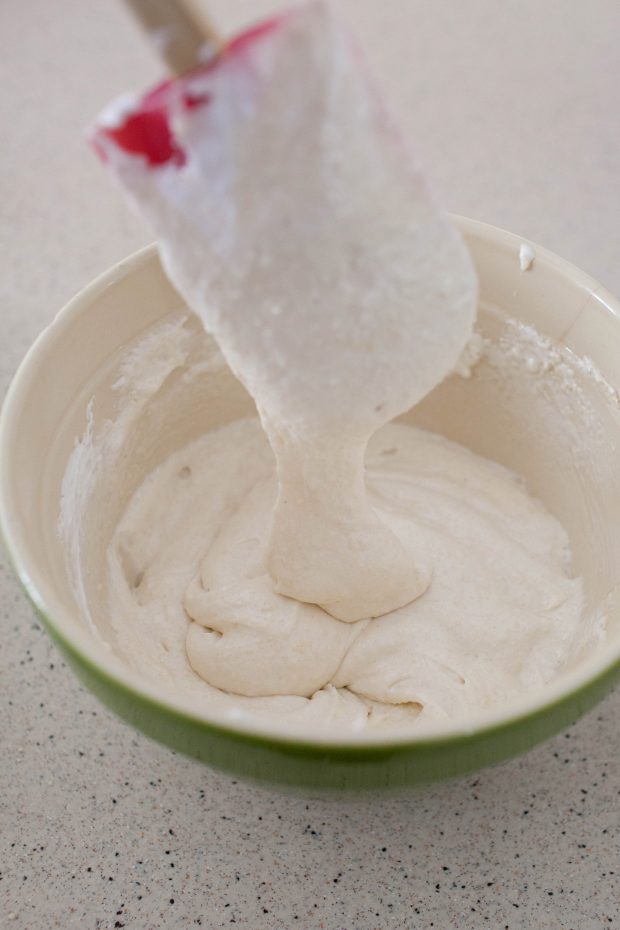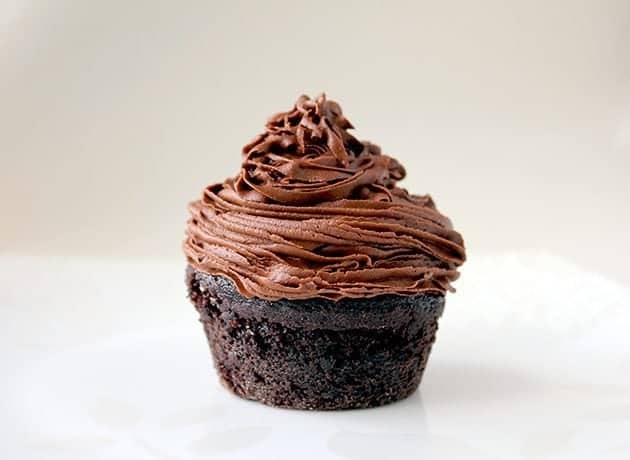French macarons are a small cookie with a big reputation. A reputation for being beautiful and delectable, and also a reputation for being incredibly temperamental and finicky to make. The first time I made them, and many times after that, I wasn’t sure what all the fear was for. They had always turned out fine. But then suddenly, they didn’t. Sometimes they worked out but sometimes not so much. I tried various techniques to troubleshoot these issues with varying success but overall, I was frustrated. I was ready to try something new. And suddenly, in absolute perfect timing, my copy of Bouchon Bakery by Thomas Keller arrived and it held the key to fixing my macaron frustrations.
The general method I had relied upon before is known as the French method, where the dry ingredients are folded into a meringue. The method described here is known as the Italian method, and involves incorporating a sugar syrup into the egg whites while they are being whipped (i.e. an Italian meringue), which is then incorporated into the dry ingredient mixture. Having now experimented with both methods repeatedly, I find I prefer this method for numerous reasons. First and foremost, I get the results I want consistently. I prefer the taste, texture, and appearance of these to any I have made before. Second, the recipe allows some flexibility so to ensure the batter is the appropriate texture for piping. And third, I find this more convenient in multiple ways. There is no need to age the egg whites (YAY!), wait and let the shells rest before baking, or to let them sit for ages before oh-so-carefully removing them from the baking sheets. Pipe, bake, cool briefly, and move to a cooling rack. Repeat as needed.
So, after making literally hundreds of these with great results, I decided they were ready to be shared with you all. Hopefully you will enjoy this recipe just as much as I do! Here I’ll walk you through the general technique and the exact recipe to include measurements is below. Let’s make macarons!
First, preheat the oven to 350˚ F and place a rack in the middle of the oven. Line baking sheets with parchment paper. In a large bowl, combine the almond meal and confectioners’ sugar. Whisk together to blend and break up any clumps. (You can also use an equal weight of blanched or slivered almonds and grind them in a food processor, but I much prefer the convenience of almond meal, not to mention I think it ultimately results in a better texture. If your almond meal is coarse or looks clumpy, you may want to run it through the food processor to grind it a bit more, to ensure a nice smooth top to those pretty cookies.)
Increase the mixer speed to medium and pour the syrup down the side of the bowl in a slow drizzle until fully incorporated.
Increase the mixer speed to medium-high and whip the meringue until stiff, glossy peaks form. If you are going to add color to the macaron shells, this is the time to do so. Gel or powdered food colors should be used. The Bouchon book recommends Chef Master Liqua-Gel colors, and now that I have tried them I whole-heartedly agree. I have tried so, so many brands of powders and gels for coloring macarons and these win by a landslide. Just remember that whatever color your meringue mixture is, it will lighten a bit when mixed with the almond mixture, so keep that in mind depending on the end result you are hoping for.

Add one third of the meringue mixture to the bowl with the almond mixture. Fold in gently until the mixture is smooth. A bit at a time, gently fold in the remaining meringue until the batter is smooth and runs in thick ribbons off of the spatula. You may not need all of the meringue, so add it gradually. (I typically use most but not all of it.)
The batter may create small peaks immediately after piping, but if it is the correct texture these will smooth themselves away after a minute or two. If the batter is too stiff, the peaks will remain and the tops of the shells may not be totally smooth. If the batter is too thin, the rounds will spread further.
Let the shells cool just briefly on the baking sheet, maybe 5 minutes or so, and then peel away from the parchment. They should come away easily and fully intact. Transfer to a cooling rack. Repeat as needed with the remaining batter, replacing the parchment paper with each batch.
Once the shells are baked and cooled, match them up in pairs by size and sandwich with the filling of your choice. Ganache or Swiss meringue buttercream are my favorite options. For the most part, the filling of the macaron is where the majority of the flavor play comes in because the shells should not be altered too much or they may not turn out quite right.
Original article and pictures take http://www.annies-eats.com/2012/12/28/how-to-make-macarons-step-by-step/ site

Комментариев нет:
Отправить комментарий